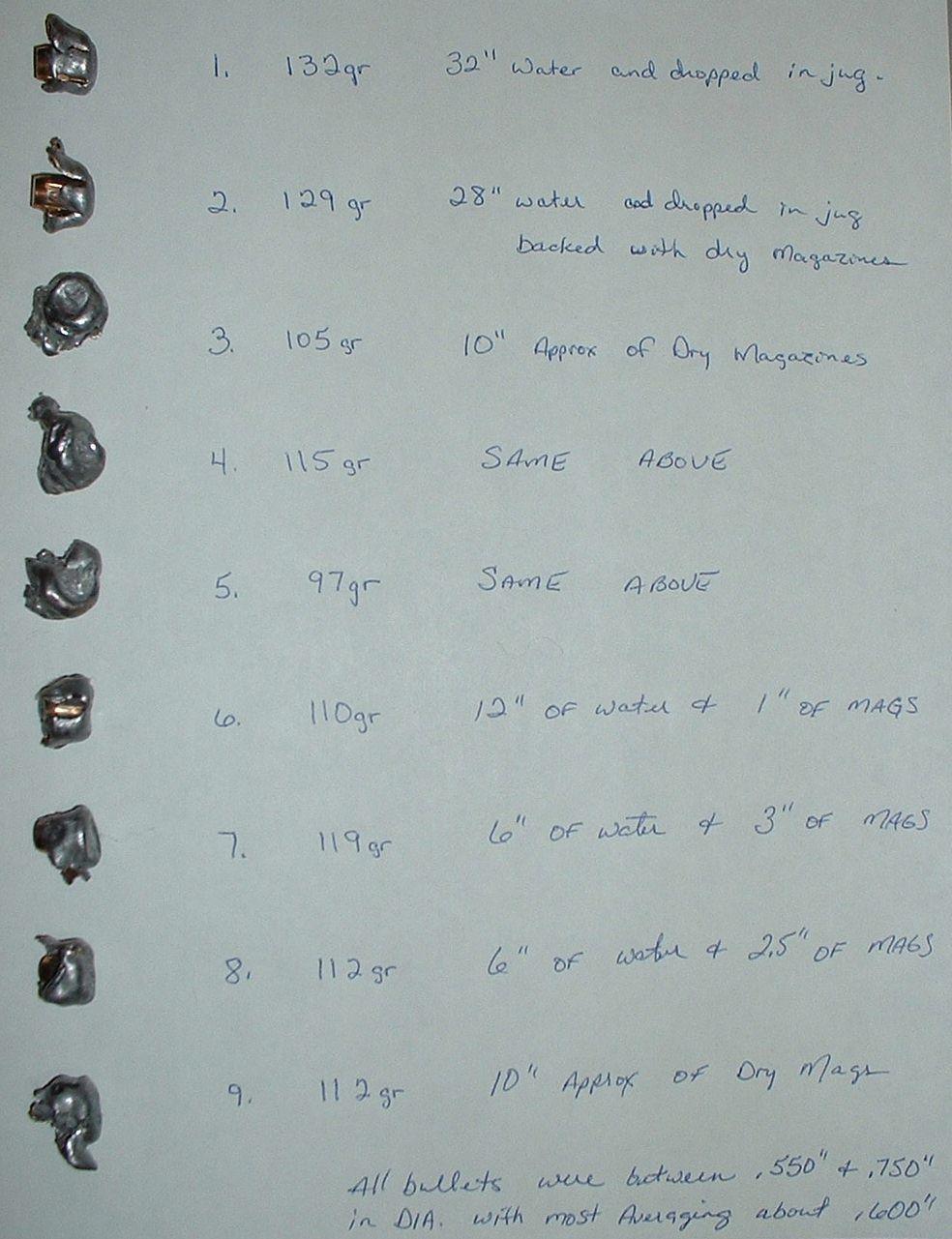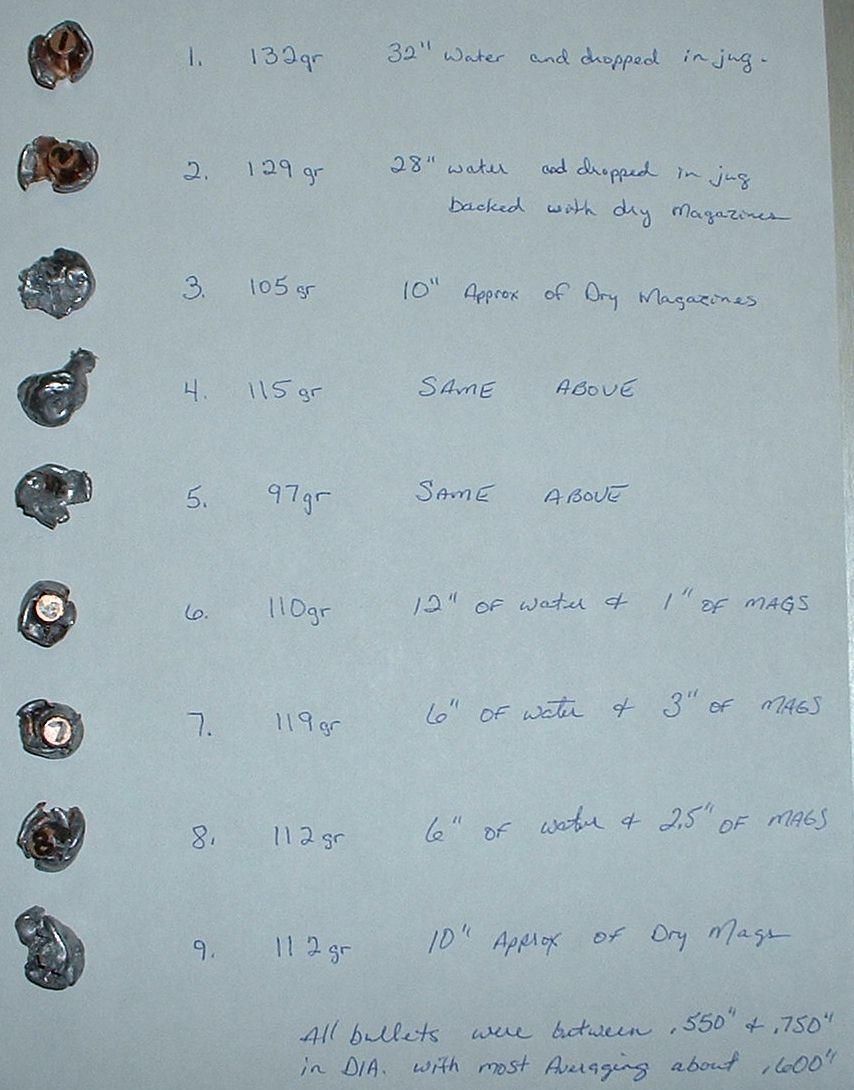Brent
Well-Known Member
I shot these AB's into water filled jugs at 15' and also a combination of jugs backed by compressed dry magazines, and some just shot into the magazines themselves. I forgot to wright down the MV beside the bullet in the pix but I'll list it here.
These were tested in a 26" bbl 300 Ultra Mag. and were done while working up loads with 4 powders, each loads two grains apart.
1) 2961 fps Retumbo 86,88,90gr pressure was 57,60,64 kpsi respectively.
2) 3011
3) 3082
4) 3017 fps RL22 82,84,86gr pressure was 64,67,71 kpsi.
5) 3090
6) 3170
7) 3013 fps IMR4350 77,79,81gr pressure was 64,71,72 kpsi.
8) 3100
9) 3134
The following additional loads with RL25 were tested with two different powder lot #'s. They were both tested with 84,86,88gr.
10) 3076 fps RL25 lot 25180 pressure was 65, 67, 71 kpsi.
11) 3121
12) 3201
13) 3009 fps RL25 lot 25057 pressure was 62,65,67 kpsi.
14) 3108
15) 3150
OAL was 3.835" and pressure would likely be higher if seated at 3.660" to fit in the magazine. Start low and work up, your gun may be different.

Sorry about the picture size, Imagestation reduced the 500kb images size to 15kb...
 Good luck reading the wrighting on them.
Good luck reading the wrighting on them.
Refer to the larger pix below that Jon posted for me.

[ 06-20-2003: Message edited by: Brent ]
[ 06-21-2003: Message edited by: Brent ]
These were tested in a 26" bbl 300 Ultra Mag. and were done while working up loads with 4 powders, each loads two grains apart.
1) 2961 fps Retumbo 86,88,90gr pressure was 57,60,64 kpsi respectively.
2) 3011
3) 3082
4) 3017 fps RL22 82,84,86gr pressure was 64,67,71 kpsi.
5) 3090
6) 3170
7) 3013 fps IMR4350 77,79,81gr pressure was 64,71,72 kpsi.
8) 3100
9) 3134
The following additional loads with RL25 were tested with two different powder lot #'s. They were both tested with 84,86,88gr.
10) 3076 fps RL25 lot 25180 pressure was 65, 67, 71 kpsi.
11) 3121
12) 3201
13) 3009 fps RL25 lot 25057 pressure was 62,65,67 kpsi.
14) 3108
15) 3150
OAL was 3.835" and pressure would likely be higher if seated at 3.660" to fit in the magazine. Start low and work up, your gun may be different.
Sorry about the picture size, Imagestation reduced the 500kb images size to 15kb...
Refer to the larger pix below that Jon posted for me.
[ 06-20-2003: Message edited by: Brent ]
[ 06-21-2003: Message edited by: Brent ]


